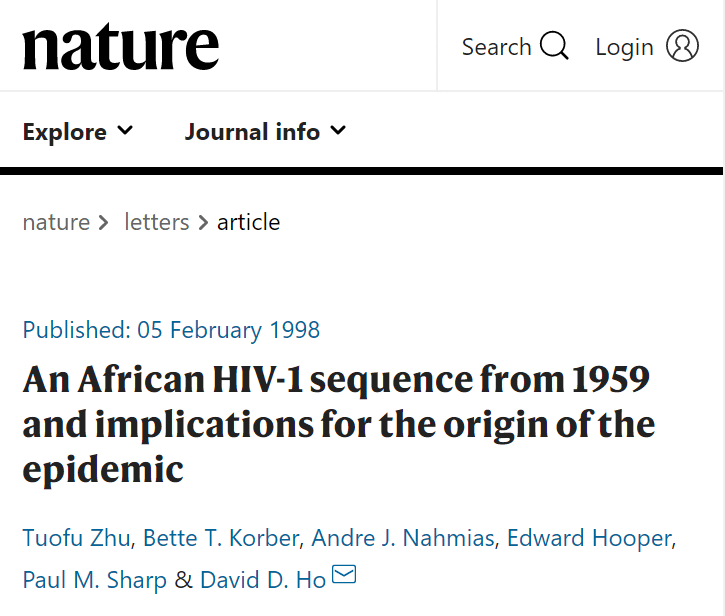Although AIDS was first identified in the United States in the early 1980s, what is believed to be the earliest case of a human being being infected by the disease has been identified as occurring in 1959.
The location was the Belgian Congo (now the Democratic Republic of the Congo). The victim was a man of the Bantu tribe, who reported to a doctor with symptoms that included blood clotting and joint pain. At the time it was assumed that he was suffering from sickle-cell anemia. But blood samples preserved at the time were analysed in the 1990s and a very early version of HIV was found to be present.
Researchers believe that the HIV that we know today evolved among chimpanzees and was introduced into the African population in a single episode (perhaps from a bite; perhaps from eating an infected animal) not long before 1959. Earlier reports of a British sailor and his family who all died of an AIDS-like disease in that same year are now thought not to have been AIDS, but this points to how the disease is likely to have spread – in the globalised world of colonialism, millions of people were travelling all over the world in the post-WW2 period.
All through the 1960s and seventies, the disease spread quietly across the globe in ships and on planes, from one person to the next, primarily through sexual contact, killing indeterminate numbers of people until doctors in the US noticed an outbreak of unusual diseases among gay men – and started to wonder what was going on …



